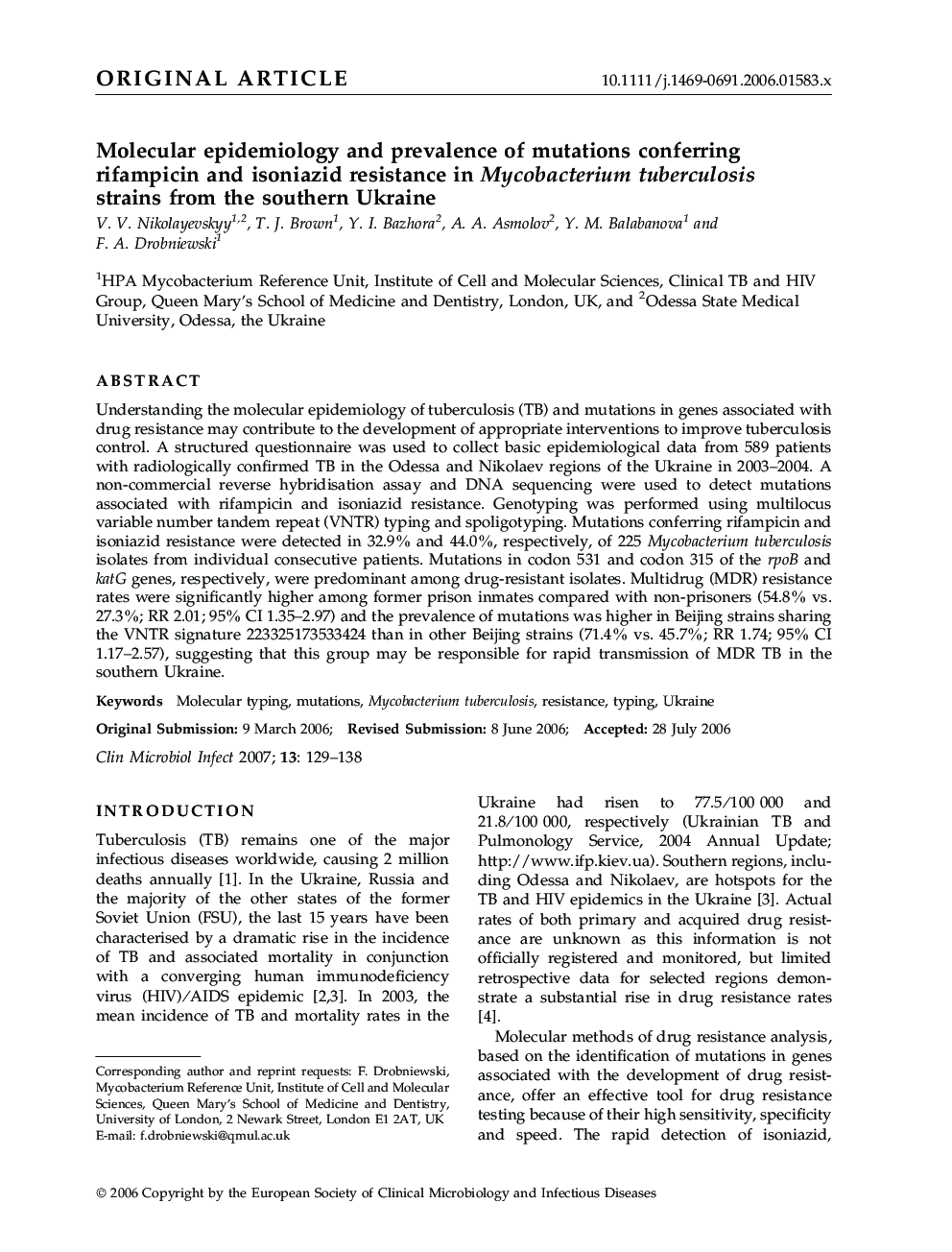| Article ID | Journal | Published Year | Pages | File Type |
|---|---|---|---|---|
| 3398485 | Clinical Microbiology and Infection | 2007 | 10 Pages |
Understanding the molecular epidemiology of tuberculosis (TB) and mutations in genes associated with drug resistance may contribute to the development of appropriate interventions to improve tuberculosis control. A structured questionnaire was used to collect basic epidemiological data from 589 patients with radiologically confirmed TB in the Odessa and Nikolaev regions of the Ukraine in 2003–2004. A non-commercial reverse hybridisation assay and DNA sequencing were used to detect mutations associated with rifampicin and isoniazid resistance. Genotyping was performed using multilocus variable number tandem repeat (VNTR) typing and spoligotyping. Mutations conferring rifampicin and isoniazid resistance were detected in 32.9% and 44.0%, respectively, of 225 Mycobacterium tuberculosis isolates from individual consecutive patients. Mutations in codon 531 and codon 315 of the rpoB and katG genes, respectively, were predominant among drug-resistant isolates. Multidrug (MDR) resistance rates were significantly higher among former prison inmates compared with non-prisoners (54.8% vs. 27.3%; RR 2.01; 95% CI 1.35–2.97) and the prevalence of mutations was higher in Beijing strains sharing the VNTR signature 223325173533424 than in other Beijing strains (71.4% vs. 45.7%; RR 1.74; 95% CI 1.17–2.57), suggesting that this group may be responsible for rapid transmission of MDR TB in the southern Ukraine.
